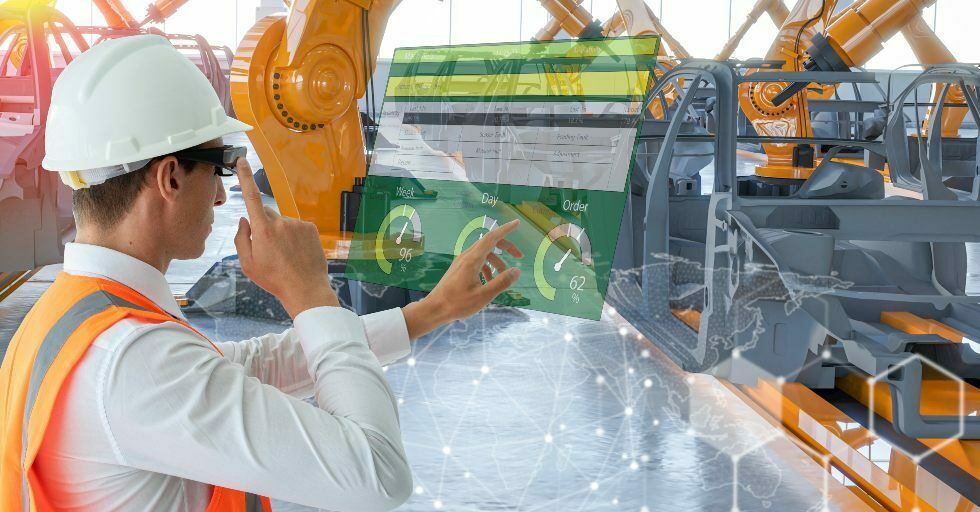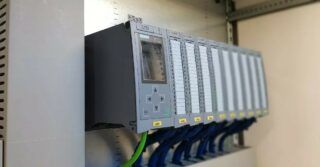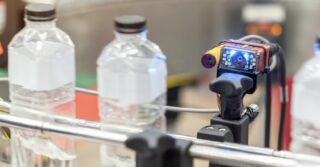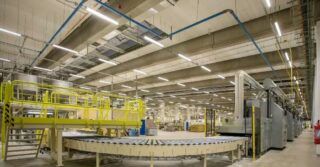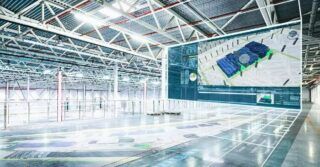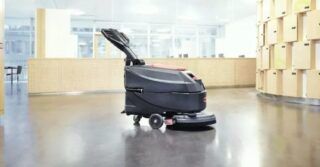A relatively short history of computerized maintenance management systems (CMMS) shows the rapid development of their availability and functionality, helping to determine buyers’ priorities as each new generation emerges. From punched cards to minicomputers, PC computers, and now popular cloud-based systems.
The first CMMS system appeared in 1965, almost 60 years ago! Initially, punched cards were used for documentation and reminding technicians about maintenance tasks, such as changing oil in equipment engines. Nowadays, CMMS-class systems offer many more functionalities, supporting reactive, corrective, preventive, and even predictive actions.
Automation of processes – a way to maximize efficiency
You often wonder what you can do to achieve maximum efficiency and gain an advantage in your industry. The impact on this can be the automation of processes in your company, the ease of detecting problems, and implementing ideas that add value to the organization. To automate maintenance processes, CMMS systems are implemented, allowing you to optimize processes, save time, and reduce costs in all areas of maintenance. After implementation, various benefits can be observed across different areas of the company, including:
- Increasing equipment reliability by 40%
- Accelerating communication between departments by 25%
- Standardizing data and managing documentation by 30%
- Improving the efficiency of preventive maintenance planning by 40%
- Reducing downtime by 12%
- Increasing the operational capabilities of the maintenance department by 20% to 50%
Functionality of CMMS systems
The basic functionalities of CMMS systems include planning maintenance actions, both preventive and predictive, using digital calendars, reporting unplanned downtime using mobile devices, tracking inventory levels, monitoring employee tasks and results, analyzing reports, efficiency indicators, and reports.
Further, we will present additional functionalities of CMMS systems that can expand their capabilities.
Integration of CMMS with SCADA systems and PLC sensors
SCADA systems open up opportunities to use PLC sensors to collect data (measurements), visualize them, and automatically notify in case of anomalies. PLC sensors are also effective when used independently, allowing for accurate recording of measurements and detection of irregularities.
When SCADA systems are integrated with CMMS, the functionalities of both systems become compatible:
- Collecting and analyzing data in real-time, in the same place as managing other maintenance activities
- Automatic notifications of faults related to specific machines to the relevant technician
- Planning inspections and predictive actions based on sensor readings becomes fast, comprehensive, and eliminates the likelihood of failures
Close integration of the system monitoring the production (or technological) process with CMMS software, using PLC sensors, enables achieving maximum efficiency of the machinery park, thus minimizing losses resulting from downtime.
Integration of MES and CMMS
MES systems optimize production-related activities, which are closely related to maintenance services. Therefore, the integration of MES and CMMS systems seems inevitable when both solutions are used in a company. The exchange of data and information about parts, machines, and maintenance personnel is essential. An important benefit of connecting MES and CMMS systems is the automatic generation of service requests for technicians. When anomalies are detected and recorded by production employees, the CMMS system receives the information and dispatches a technician for repairs.
Automatic OEE calculations, micro-downtime detection, and automatic generation of notifications for the need for batch material delivery on the production line are also features to note.
Communication between ERP and CMMS systems
Advanced Planning and Scheduling (APS) systems extend the functionality of ERP systems, providing advanced planning, simulation, and optimization features for business operations. Their integration with CMMS systems, responsible for supporting maintenance departments, allows for data exchange and coordination between both systems, making planning activities easier. Due to common areas appearing in both systems, their integration saves time and eliminates the need to enter data multiple times. Significant benefits arising from the communication between APS and CMMS systems include:
- Automatic transmission of inventory levels without the need to move between two systems
- Full and easily accessible cost information
Automation of the parts procurement process is also possible:
- UR technicians retrieve parts using a mobile unit of the CMMS system
- Information about the quantity and type of parts is recorded in the CMMS system
- Information about the minimum inventory level triggers an automatic parts order
- Purchasing department confirms and controls the delivery through the APS or ERP system
CMMS with Virtual Reality (VR)
Virtual reality is often associated with entertainment or smart home electronics, but it’s worth noting that Computerized Maintenance Management Systems (CMMS) also make use of this technology. Using Augmented Reality (AR), technicians and maintenance workers, as well as platform workers, can access real-time metrics, equipment history, and work orders without the need for electronic devices. Innovative solutions such as VR goggles or “smart helmets” are gaining popularity. They provide technicians with essential information (machine data, parts, location) in visual form. Additionally, they simplify the planning and execution of preventive and predictive actions, as well as future event prediction.
Implementation of CMMS as the beginning of digitization
Choose CMMS as your first system in the company! It’s quite an unusual approach, isn’t it?
Most companies choose ERP systems to digitize documentation in the company for recording employee hours. A similar choice is made when there is a need for inventory management, or control of material and spare part deliveries. To analyze production indicators, MES systems are selected to make production management easier and improve efficiency indicators.
Did you know that CMMS systems can temporarily fulfill the functions of ERP and MES systems until you decide to implement them?
CMMS system costs are often lower, and the implementation time can be shorter. Therefore, when starting the digitization of the company, it is worth considering the implementation of CMMS as the first system. Why? Some CMMS systems provide functionalities for managing personnel, inventory, administration, or production through:
- HR modules for registering individuals, their data, role assignments, and permission control, along with recording work, leave, and availability
- Endpoints dedicated to production workers, allowing them to add service requests, view documentation, add files or photos to the system, and, with established habits, perform corrective actions or implement TPM (Total Productive Maintenance) strategies in the company
- Warehouse modules responsible for inventory control, establishing minimum and maximum inventory levels, and sending orders to suppliers
Modern maintenance management systems can have many more valuable functionalities than standard solutions for maintenance management. Integration should also be considered to gain a solution compatible with multiple departments and make the most of the system’s capabilities for the benefit of the company.


